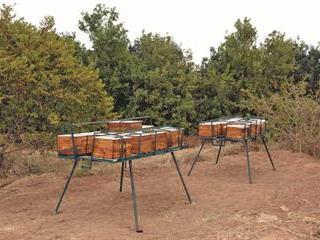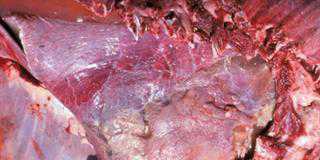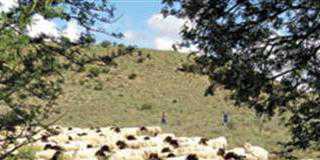
Macadamias, like most flowering plants, need optimal pollination to produce the highest yield. But dwindling honeybee numbers mean that today’s farmers have to work harder than ever to bring in enough hives and place these correctly in orchards.
Speaking at the Valley Macadamias farmers’ day, Guy Stubbs, founder of African Honey Bee, advises farmers on how to maximise bee activity in orchards. “Many documented trial results are available that demonstrate how well-managed pollination can increase macadamia yield. However, at least two colonies are required to pollinate one hectare, making hive management in the orchard crucial,” Stubbs explains.
The placement of hives in an orchard is very important to ensure optimal pollination. “Hives must be placed near the centre of the orchard to minimise the chance of bees targeting other sources of nectar and pollen. Weeds are very attractive to bees, especially blackjacks, so it’s important to keep the orchards weed-free.”
Bee hives should not be placed directly beneath trees, as too much shade will cause the temperature to fall, resulting in the bees becoming inactive. “Bee activity is limited below 13°C so it’s best to place hives where they’ll receive early morning and late afternoon sun,” says Stubbs.
Although two hives/ha is the absolute minimum, five to eight hives/ha is optimal, depending on tree density. The hives should be placed within 300m of a water source, but not too close to irrigation systems, where they can get wet. Low-lying, damp and windy areas should also be avoided. Stubbs stresses that farmers should place the hives where they are easily accessible by beekeepers, who collect them at night.
Timing
Macadamia flowers open over a six- to 12-day period. It is important to place hives in the orchards during this time, preferably five days before flowers open. If this is done any earlier, the bees will not have enough food and will either die or leave the orchard in search of food.
A bee visits each raceme approximately 50 times per day. Individual flowers remain attractive to insects for three days, therefore each raceme needs about 150 visits to be adequately pollinated. The quality of macadamia pollen can vary, according to Stubbs.
“It ranges from 16% to 22% crude protein and the amino acid iso-leucine appears to be a major limiting nutritional factor for bees,” he says. This low nutritional value means hives need to be primed by removing the incoming pollen, thereby encouraging bees to collect more pollen.
Hives and pesticide
One of the greatest drawbacks of placing bees near agricultural crops is that they may be affected by pesticides. Pollination can be improved by planning insecticide spraying regimes to avoid peak pollinator activity. Stubbs stresses that pesticides should be kept to a minimum while there are hives on a property, as most poisoning occurs when pesticides are applied to flowering crops, pastures and weeds.
“To reduce bee losses, farmers must heed the warnings on pesticide labels, select the least harmful insecticide for bees and spray in the late afternoon or at night. Do not spray in conditions where spray may drift onto adjacent lands supporting foraging bees.”
Farmers should also educate workers on the technicalities of pollination to ensure they make informed decisions on irrigation and pesticide application. Stubbs cautions that due to the scarcity of beekeepers, farmers should book bees for pollination a year in advance.
“It’s also advisable to draw up a contract with a beekeeper to avoid any misunderstandings or conflict,” he says.
Email Guy Stubbs at [email protected] or visit www.africanhoneybee.co.za













